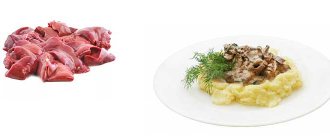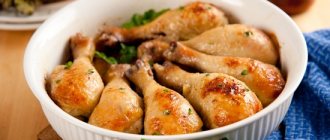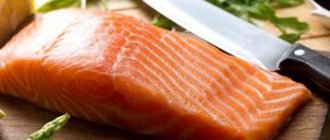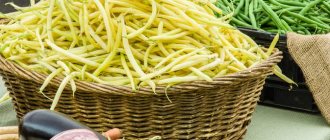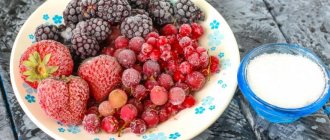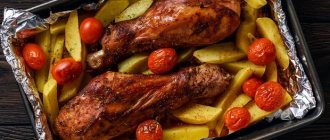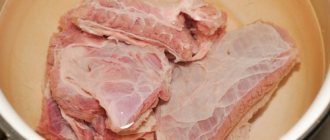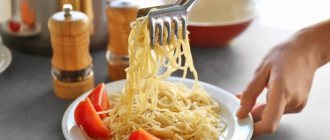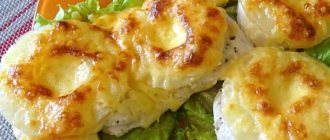Veal is the meat of dairy calves whose taste buds have tasted nothing but mother's milk. This meat is considered the most valuable, nutritious and extremely tasty.
Most often, veal is obtained from male dairy cattle, although the taste and texture of the meat from females is absolutely identical. This is done for a simple reason: the dairy cow will be able to bear and give birth to another calf (or several).
So what's so good about veal and is it worth forking out to introduce tender cuts into your daily diet?
Veal ingredients
| Unsalted butter “Krestyanskoe” | 20 g |
| Tomato paste. Canned food (Poaching) | 30 g |
| Water | 500 g |
| Red hot pepper | 5 g |
| Table salt | 10 g |
| Onions (Poaching) | 150 g |
| Parsley (root) | 40 g |
| Green coriander (cilantro), raw | 60 g |
| Veal 2 cat. (Quenching) | 1000 g |
Beef, cutlet meat (Stewing) 500 g Unsalted butter “Krestyanskoe” 20 g Tomato paste. Canned food 30 g Water 1000 g Hot red pepper 10 g Salt 10 g Onion (Poaching) 150 g Parsley 30 g Coriander (cilantro), raw 60 g
Nutritional value and chemical composition of “veal”.
| Nutrient | Quantity | Norm** | % of the norm in 100 g | % of the norm in 100 kcal | 100% normal |
| Calorie content | 73.7 kcal | 1684 kcal | 4.4% | 6% | 2285 g |
| Squirrels | 13.4 g | 76 g | 17.6% | 23.9% | 567 g |
| Fats | 1.6 g | 56 g | 2.9% | 3.9% | 3500 g |
| Carbohydrates | 1.5 g | 219 g | 0.7% | 0.9% | 14600 g |
| Organic acids | 0.1 g | ||||
| Alimentary fiber | 1 g | 20 g | 5% | 6.8% | 2000 g |
| Water | 84 g | 2273 g | 3.7% | 5% | 2706 g |
| Vitamins | |||||
| Vitamin A, RE | 25.5 mcg | 900 mcg | 2.8% | 3.8% | 3529 g |
| beta carotene | 0.198 mg | 5 mg | 4% | 5.4% | 2525 g |
| Vitamin B1, thiamine | 0.082 mg | 1.5 mg | 5.5% | 7.5% | 1829 |
| Vitamin B2, riboflavin | 0.144 mg | 1.8 mg | 8% | 10.9% | 1250 g |
| Vitamin B4, choline | 0.55 mg | 500 mg | 0.1% | 0.1% | 90909 g |
| Vitamin B5, pantothenic | 0.052 mg | 5 mg | 1% | 1.4% | 9615 g |
| Vitamin B6, pyridoxine | 0.047 mg | 2 mg | 2.4% | 3.3% | 4255 g |
| Vitamin B9, folates | 4.631 mcg | 400 mcg | 1.2% | 1.6% | 8637 g |
| Vitamin C, ascorbic acid | 3.18 mg | 90 mg | 3.5% | 4.7% | 2830 g |
| Vitamin D, calciferol | 0.017 mcg | 10 mcg | 0.2% | 0.3% | 58824 g |
| Vitamin E, alpha tocopherol, TE | 0.159 mg | 15 mg | 1.1% | 1.5% | 9434 g |
| Vitamin H, biotin | 0.181 mcg | 50 mcg | 0.4% | 0.5% | 27624 g |
| Vitamin K, phylloquinone | 12.5 mcg | 120 mcg | 10.4% | 14.1% | 960 g |
| Vitamin RR, NE | 7.1068 mg | 20 mg | 35.5% | 48.2% | 281 g |
| Macronutrients | |||||
| Potassium, K | 293.74 mg | 2500 mg | 11.7% | 15.9% | 851 g |
| Calcium, Ca | 20.33 mg | 1000 mg | 2% | 2.7% | 4919 g |
| Magnesium, Mg | 20.52 mg | 400 mg | 5.1% | 6.9% | 1949 |
| Sodium, Na | 334.7 mg | 1300 mg | 25.7% | 34.9% | 388 g |
| Sera, S | 146.23 mg | 1000 mg | 14.6% | 19.8% | 684 g |
| Phosphorus, P | 147.9 mg | 800 mg | 18.5% | 25.1% | 541 g |
| Chlorine, Cl | 408.54 mg | 2300 mg | 17.8% | 24.2% | 563 g |
| Microelements | |||||
| Bor, B | 20.1 mcg | ||||
| Iron, Fe | 2.155 mg | 18 mg | 12% | 16.3% | 835 g |
| Yod, I | 0.48 mcg | 150 mcg | 0.3% | 0.4% | 31250 g |
| Cobalt, Co | 1.108 mcg | 10 mcg | 11.1% | 15.1% | 903 g |
| Manganese, Mn | 0.0472 mg | 2 mg | 2.4% | 3.3% | 4237 g |
| Copper, Cu | 29.39 mcg | 1000 mcg | 2.9% | 3.9% | 3403 g |
| Molybdenum, Mo | 1.343 mcg | 70 mcg | 1.9% | 2.6% | 5212 g |
| Selenium, Se | 0.038 mcg | 55 mcg | 0.1% | 0.1% | 144737 g |
| Fluorine, F | 36.7 mcg | 4000 mcg | 0.9% | 1.2% | 10899 g |
| Chromium, Cr | 0.2 mcg | 50 mcg | 0.4% | 0.5% | 25000 g |
| Zinc, Zn | 0.1342 mg | 12 mg | 1.1% | 1.5% | 8942 g |
| Sterols (sterols) | |||||
| Cholesterol | 56 mg | max 300 mg |
The energy value of veal is 73.7 kcal.
Primary Source: Created in the application by the user. Read more.
** This table shows the average levels of vitamins and minerals for an adult. If you want to know the norms taking into account your gender, age and other factors, then use the “My Healthy Diet” application.
Source
Ingredients Boiled veal
Nutritional value and chemical composition of “Boiled veal”.
| Nutrient | Quantity | Norm** | % of the norm in 100 g | % of the norm in 100 kcal | 100% normal |
| Calorie content | 108.5 kcal | 1684 kcal | 6.4% | 5.9% | 1552 g |
| Squirrels | 24.4 g | 76 g | 32.1% | 29.6% | 311 g |
| Fats | 1.3 g | 56 g | 2.3% | 2.1% | 4308 g |
| Water | 70.7 g | 2273 g | 3.1% | 2.9% | 3215 g |
| Ash | 0.724 g | ||||
| Vitamins | |||||
| Vitamin B1, thiamine | 0.088 mg | 1.5 mg | 5.9% | 5.4% | 1705 g |
| Vitamin B2, riboflavin | 0.184 mg | 1.8 mg | 10.2% | 9.4% | 978 g |
| Vitamin B4, choline | 110.25 mg | 500 mg | 22.1% | 20.4% | 454 g |
| Vitamin B5, pantothenic | 0.798 mg | 5 mg | 16% | 14.7% | 627 g |
| Vitamin B6, pyridoxine | 0.252 mg | 2 mg | 12.6% | 11.6% | 794 g |
| Vitamin B12, cobalamin | 2.646 mcg | 3 mcg | 88.2% | 81.3% | 113 g |
| Vitamin E, alpha tocopherol, TE | 0.158 mg | 15 mg | 1.1% | 1% | 9494 g |
| Vitamin H, biotin | 6.3 mcg | 50 mcg | 12.6% | 11.6% | 794 g |
| Vitamin RR, NE | 8.316 mg | 20 mg | 41.6% | 38.3% | 241 g |
| Macronutrients | |||||
| Potassium, K | 198.1 mg | 2500 mg | 7.9% | 7.3% | 1262 g |
| Calcium, Ca | 12.94 mg | 1000 mg | 1.3% | 1.2% | 7728 g |
| Magnesium, Mg | 23.86 mg | 400 mg | 6% | 5.5% | 1676 g |
| Sodium, Na | 68.04 mg | 1300 mg | 5.2% | 4.8% | 1911 |
| Sera, S | 268.38 mg | 1000 mg | 26.8% | 24.7% | 373 g |
| Phosphorus, P | 198.9 mg | 800 mg | 24.9% | 22.9% | 402 g |
| Chlorine, Cl | 45.36 mg | 2300 mg | 2% | 1.8% | 5071 g |
| Microelements | |||||
| Iron, Fe | 3.207 mg | 18 mg | 17.8% | 16.4% | 561 g |
| Yod, I | 1.95 mcg | 150 mcg | 1.3% | 1.2% | 7692 g |
| Cobalt, Co | 5.53 mcg | 10 mcg | 55.3% | 51% | 181 g |
| Manganese, Mn | 0.0223 mg | 2 mg | 1.1% | 1% | 8969 g |
| Copper, Cu | 272.3 mcg | 1000 mcg | 27.2% | 25.1% | 367 g |
| Nickel, Ni | 0.855 mcg | ||||
| Fluorine, F | 57.9 mcg | 4000 mcg | 1.4% | 1.3% | 6908 g |
| Zinc, Zn | 3.7856 mg | 12 mg | 31.5% | 29% | 317 g |
Boiled veal ingredients
| Veal, back part (Steamed) | 490 g |
| Table salt | 3 g |
Nutritional value and chemical composition of “boiled veal”.
| Nutrient | Quantity | Norm** | % of the norm in 100 g | % of the norm in 100 kcal | 100% normal |
| Calorie content | 107 kcal | 1684 kcal | 6.4% | 6% | 1574 g |
| Squirrels | 23.6 g | 76 g | 31.1% | 29.1% | 322 g |
| Fats | 1.4 g | 56 g | 2.5% | 2.3% | 4000 g |
| Water | 72 g | 2273 g | 3.2% | 3% | 3157 g |
| Vitamins | |||||
| Vitamin B1, thiamine | 0.116 mg | 1.5 mg | 7.7% | 7.2% | 1293 g |
| Vitamin B2, riboflavin | 0.244 mg | 1.8 mg | 13.6% | 12.7% | 738 g |
| Vitamin B4, choline | 131.92 mg | 500 mg | 26.4% | 24.7% | 379 g |
| Vitamin B5, pantothenic | 1.131 mg | 5 mg | 22.6% | 21.1% | 442 g |
| Vitamin B6, pyridoxine | 0.503 mg | 2 mg | 25.2% | 23.6% | 398 g |
| Vitamin B9, folates | 7.287 mcg | 400 mcg | 1.8% | 1.7% | 5489 g |
| Vitamin E, alpha tocopherol, TE | 0.251 mg | 15 mg | 1.7% | 1.6% | 5976 g |
| Vitamin RR, NE | 11.4167 mg | 20 mg | 57.1% | 53.4% | 175 g |
| Macronutrients | |||||
| Potassium, K | 325.23 mg | 2500 mg | 13% | 12.1% | 769 g |
| Calcium, Ca | 17.76 mg | 1000 mg | 1.8% | 1.7% | 5631 g |
| Magnesium, Mg | 29.42 mg | 400 mg | 7.4% | 6.9% | 1360 g |
| Sodium, Na | 410.39 mg | 1300 mg | 31.6% | 29.5% | 317 g |
| Sera, S | 269 mg | 1000 mg | 26.9% | 25.1% | 372 g |
| Phosphorus, P | 249.1 mg | 800 mg | 31.1% | 29.1% | 321 g |
| Chlorine, Cl | 549.62 mg | 2300 mg | 23.9% | 22.3% | 418 g |
| Microelements | |||||
| Iron, Fe | 3.593 mg | 18 mg | 20% | 18.7% | 501 g |
| Yod, I | 3.39 mcg | 150 mcg | 2.3% | 2.1% | 4425 g |
| Cobalt, Co | 6.397 mcg | 10 mcg | 64% | 59.8% | 156 g |
| Manganese, Mn | 0.0445 mg | 2 mg | 2.2% | 2.1% | 4494 g |
| Copper, Cu | 288.55 mcg | 1000 mcg | 28.9% | 27% | 347 g |
| Molybdenum, Mo | 0.846 mcg | 70 mcg | 1.2% | 1.1% | 8274 g |
| Fluorine, F | 110.56 mcg | 4000 mcg | 2.8% | 2.6% | 3618 g |
| Zinc, Zn | 3.9874 mg | 12 mg | 33.2% | 31% | 301 g |
The energy value of boiled veal is 107 kcal.
Primary Source: Created in the application by the user. Read more.
** This table shows the average levels of vitamins and minerals for an adult. If you want to know the norms taking into account your gender, age and other factors, then use the “My Healthy Diet” application.
Veal
Veal is the meat of dairy calves whose taste buds have tasted nothing but mother's milk.
This meat is considered the most valuable, nutritious and extremely tasty. Most often, veal is obtained from male dairy cattle, although the taste and texture of the meat from females is absolutely identical. This is done for a simple reason: the dairy cow will be able to bear and give birth to another calf (or several).
So what's so good about veal and is it worth forking out to introduce tender cuts into your daily diet?
Beef and diet
Beef is a dietary product. This is mainly due to its low calorie content. In addition, the product cleanses the body and reduces cholesterol.
Eating beef is necessary to regulate metabolism, because it contains very little fat. Thanks to the consumption of beef, the body actively uses accumulated fat reserves, since it needs to make up for its absence in the product. Of course, you won’t be able to lose weight quickly this way, but you can lose excess weight.
It is also practiced to eat beef for medicinal purposes; in particular, it is recommended to use it for infectious diseases. During breastfeeding, you should eat boiled veal. For diseases of the cardiovascular system and blood, as well as for the prevention of heart attack, it is recommended to include beef liver in the diet.
This product also helps improve performance and mental performance, and significantly reduces fatigue.
Beneficial features
Veal contains concentrated vitamins, amino acids and other beneficial nutrients. Even heat treatment does not affect the chemical composition of meat and the human body receives substances in their primary form. What distinguishes veal from other types of meat? Young calf meat contains extractive substances. They are not filled with nutritional components and do not provide energy value. Extractive substances stimulate the secretion of digestive juice, making the digestion process faster and easier for the organs.
Calorie content of boiled, fried, stewed beef
The benefit of boiled beef lies not only in its low calorie content (about 250 kcal), but also in the preservation of all useful elements after heat treatment. It is best to choose young and lean meat that is not subject to repeated freezing. Approximately the same indicator of nutritional value is noted for stewed meat - 232 kcal.
Oil added during cooking increases the indicator, so frying the product is not recommended during a diet or if there are medical restrictions. An alternative option is grilling (about 250 kcal). You can add a little salt and pepper to the meat.
Chemical composition
Nutritional value (per 100 grams of raw product)
| Calorie content | 97 kcal |
| Squirrels | 19.7 g |
| Fats | 2 g |
| Carbohydrates | 0 g |
| Alimentary fiber | 0 g |
| Water | 77.3 g |
| Ash | 1 g |
Vitamin composition (in milligrams per 100 grams of raw product)
| Thiamine (B1) | 0,14 |
| Riboflavin (B2) | 0,23 |
| Niacin (B3) | 5,8 |
| Choline (B4) | 105 |
| Pantothenic acid (B5) | 0,95 |
| Pyridoxine (B6) | 0,38 |
| Folic acid (B9) | 0,0058 |
| Cobalamin (B12) | 0,021 |
| Tocopherol (E) | 0,2 |
| Biotin (N) | 0,005 |
| Nicotinic acid (PP) | 9,9 |
Nutrient balance (in milligrams per 100 grams of raw product)
| Macronutrients | |
| Potassium (K) | 345 |
| Calcium (Ca) | 12 |
| Magnesium (Mg) | 24 |
| Sodium (Na) | 108 |
| Sulfur (S) | 213 |
| Phosphorus (P) | 206 |
| Chlorine (Cl) | 72 |
| Microelements | |
| Iron (Fe) | 2900 |
| Iodine (I) | 2,7 |
| Cobalt (Co) | 5 |
| Manganese (Mn) | 33,9 |
| Copper (Cu) | 228 |
| Nickel (Ni) | 1,3 |
| Fluorine (F) | 88 |
| Zinc (Zn) | 3,17 |
Nutritional value and glycemic index
The nutritional value of beef will directly depend on the method of preparation and the part of the carcass from which it is separated. For one hundred grams of product, boiled beef has the following composition of BJU in grams:
- proteins – eighteen;
- fat – fourteen;
- There are no carbohydrates.
Lean lean beef contains twenty-five grams of protein and eight grams of carbohydrates per hundred grams of product. The glycemic index is an indicator that determines the increase in blood sugar during consumption of a certain product. Lean boiled beef and veal do not have it. This means that these products contain virtually no carbohydrates, while containing a large percentage of protein. It follows that carbohydrates will not increase blood sugar when broken down, so boiled beef is an absolutely safe food for people who suffer from diabetes.
Use in cooking
In culinary practice, a list of the most valuable and functional cuts of veal has been formed. Meat, from a culinary point of view, is a universal ingredient. It can be subjected to any type of heat treatment, and the taste of veal is combined with almost all food products.
Korean
Most often, the loin is sold on the bone. This is one of the most tender and juicy cuts, which is prepared in a matter of minutes. Brand chefs recommend grilling the loin. Even a beginner can make this kind of meat, so you don’t have to worry about wasting money. Marinate the veal in the spices/herbs, let the aromas and flavors absorb, then carefully place the loin on the grill and sear on each side. Cut the cut into portioned steaks and serve with your favorite side dish.
Marrow bone
Calf marrow bone is one of the most important ingredients in the famous St. salad. John. But there is no need to limit yourself to just one salad. From the marrow bone you can prepare a rich meat broth, seasoning for sauces, fried dishes, or use it as a base for vegetable risotto.
Veal edge
This is the pulp that is cut from the back of the rib bones. In fact, the edge is the other side of the loin (very juicy and tasty). Veal edge is suitable for cooking steaks, barbecue or classic oven baking on a bed of vegetables.
Ham
The meat comes from the back or front of the calf's leg. It can be baked whole, fried in spices or stewed. But the standard method of processing ham is smoking (both cold and hot).
Veal tongue is more tender and miniature compared to beef tongue. The ingredient must be boiled for 1 hour in salted water over low heat. The skin from the veal tongue is removed with a slight movement of the hand, and not with painful efforts (as is the case with beef). The fastest and easiest way to clean a tongue is to boil the tongue for 60 minutes, then immediately immerse it in a container with ice. The film will peel off on its own; you just need to pry it off with a knife and remove it from the surface.
Tenderloin
The most commonly used part of the carcass is the tenderloin. It is fried, marinated for barbecue, used in stews, goulash or cutlets. Any method of heat treatment is suitable, just like spices. Veal has a unique property of harmoniously combining with absolutely all food products. Therefore, feel free to experiment and don’t be afraid of failures.
Bones
Experienced chefs recommend baking the bone, and then using it to cook a rich and incredibly tasty broth. Quick recipe: place the bones and vegetables in a preheated oven for 60-70 minutes. As soon as the bones turn brown, take out the container with the ingredients. Place bones on paper towels to drain excess fat. Prepare an excellent broth based on the prepared bones. Warning: it will take at least 3 hours to cook the bones, but the result is worth the effort and time spent.
Brain
Beef brains are banned throughout the European Union due to possible mad cow disease. At the same time, veal brains are sold on every second counter of both large chain supermarkets and small private butcher shops. Brains can be subjected to all types of heat treatment, used for minced meat, or prepared as an unusual filling for a salty pie.
Features of choosing beef for cooking
The most suitable for preparing broth are ribs, rump with marrow bone, rump with bone, shoulder part, rump, shoulder blade.
Jellied meat is made from shanks, since this part contains sticky components.
First or highest grade meat is fried. To do this, they take tenderloin, fillet, rump, entrecote, rump. Stews are prepared from brisket or rump, or fillet. These parts are stuffed with various additives. Dried apricots, prunes, raisins, cardamom, and cloves are suitable for these purposes. The same parts that are recommended to be fried and stewed are baked.
To prepare minced meat you will need rump, sirloin, flank, shank, and shoulder.
Beef dishes are topped with sauces and decorated with herbs. Mashed potatoes, vegetables, and rice are suitable as a side dish. Cold beef is also served, presented as an appetizer, usually seasoned with sweet and sour sauces.
How to choose the right product
The varietal classification of veal is no different from beef. The most valuable cuts are the sirloin/rib, thigh and rump. Second grade: meat from the sides and neck cut. Third grade: knuckle and shanks.
When choosing meat, you need to focus on 3 main characteristics:
It is best to buy meat from trusted suppliers who raise and slaughter their own livestock. But a trusted butcher is a rare lottery ticket, so most people have to look for quality veal at the market or in a chain supermarket.
Smell
The smell of fresh milk that comes from meat is not an invention of the manufacturers, but an categorical fact.
The calf has not had time to taste anything other than mother's milk, so the meat, muscle joints and bones are literally saturated with a pleasant milky aroma. If it is not possible to assess the smell of the cut (for example, if the meat is packaged in a supermarket), then carefully study the information on the label. The consumer must be provided with information about the time and date of slaughter. Based on the dates on the packaging, choose the most valuable and “beautiful” cut. All veal cuts are bright red. The fat layers should be snow-white. If the meat is a beautiful red hue, but the veins have turned yellow, then discard the product. Fat layers darken with age and long-term storage. The color of the meat should be uniform and uniform throughout the cut. Spots, stripes, and abrasions indicate improper storage conditions or problems during transportation.
Remember: the lighter the meat, the younger the animal was at the time of slaughter.
Structure
The classic test for meat elasticity is also suitable for veal. Lightly poke the surface of the meat with your finger. If the cut quickly returns to its original position, then everything is in order and the freshness of the meat is confirmed. If the loose structure of the meat cannot fill the formed dimple, then refuse the purchase. The meat has most likely been on the shelf for a long time and is not in great demand. A loose structure also indicates the presence of chemical additives and antibiotics to stimulate growth.
Features of lean beef
Lean meat is extracted from parts of the carcass that are devoid of fatty layers. It is better to cook it without oil. A successful choice is indicated by the color of the meat; it ranges from pink to bright red. Beef fillet should be firm and smell good. When pressing on such meat, the dimple on it smoothes out after a few seconds, which is a sign of the freshness of the product.
Beef does not lose its beneficial properties even after cooking. Lean beef has the lowest calorie content.
